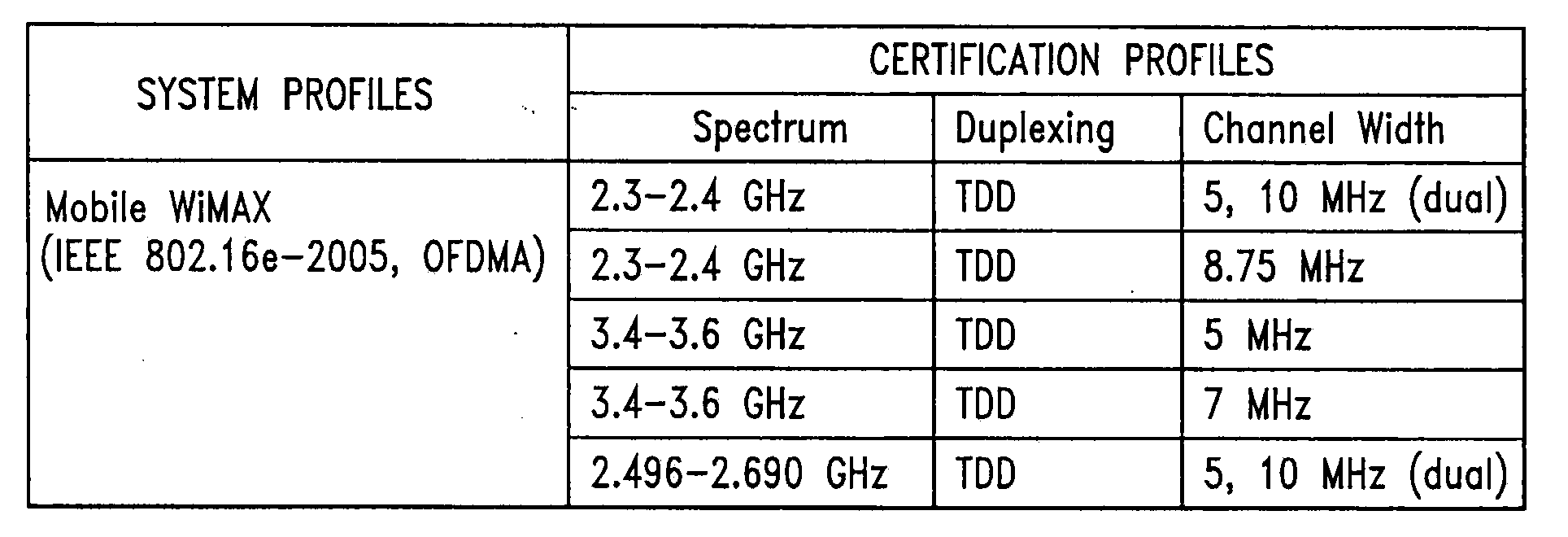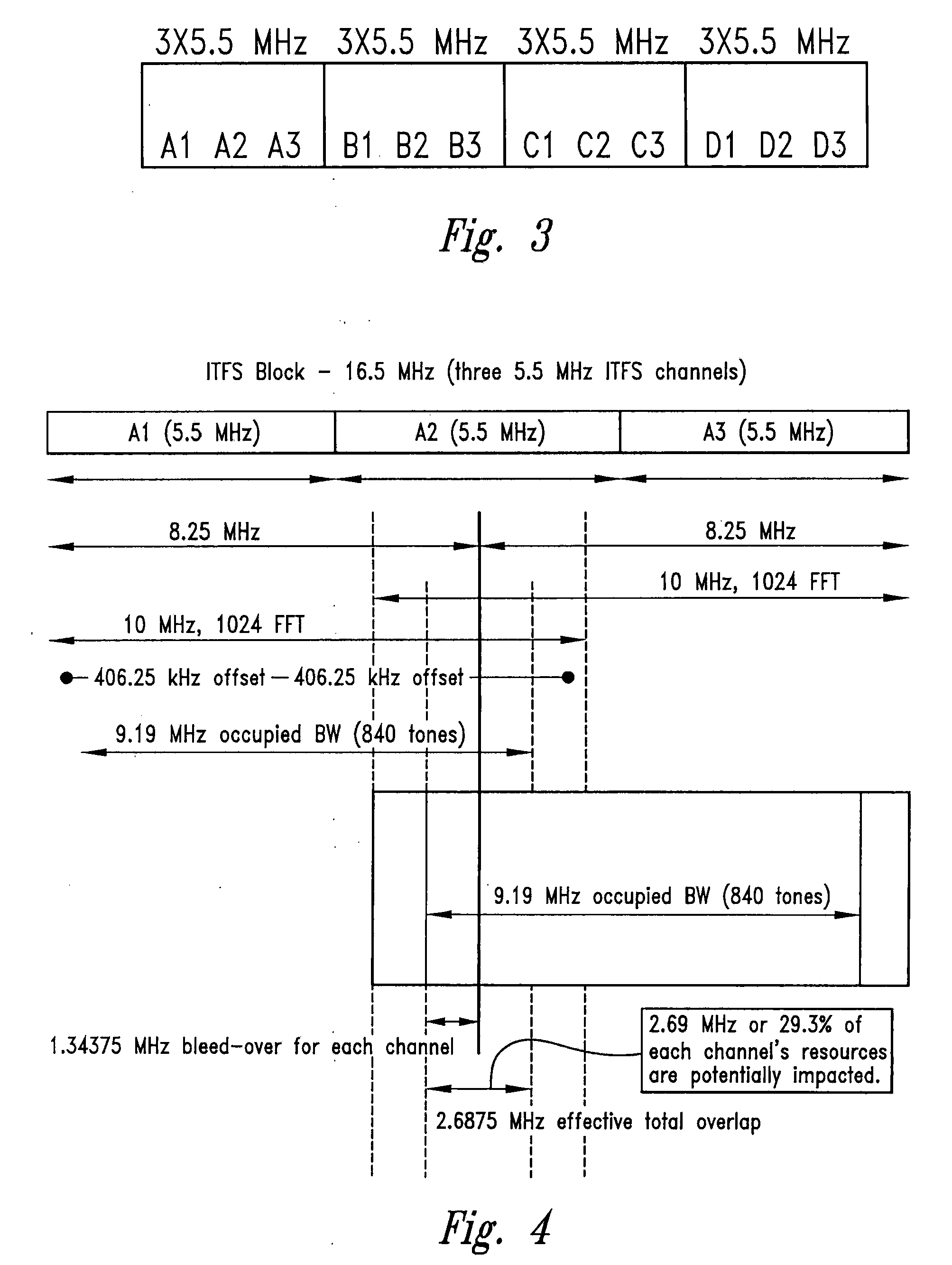System and method for condensed frequency reuse in a wireless communication system
- Summary
- Abstract
- Description
- Claims
- Application Information
AI Technical Summary
Benefits of technology
Problems solved by technology
Method used
Image
Examples
Embodiment Construction
[0018]The system described herein provides a novel spectrum allocation strategy. The examples provided herein are in the 2.5 GHz band. The invention is applicable to other portions of the spectrum. This band was previously designated as an Instructional Television Fixed Service (ITFS) and Multipoint Distribution Service (MDS) band. Under the frequency spectrum allocation originally developed by the Federal Communications Commission (FCC) the band was divided into 6 MHz channels. This portion of the spectrum today is referred to as the Educational Broadband Service (EBS) / Broadband Radio Services (BRS) spectrum. Although this portion of the spectrum is generally referred to as the EBS / BRS spectrum, it is sometimes still referred to as the ITFS / MDS spectrum.
[0019]The ITFS / MDS spectrum was originally sold in 6.0 MHz allocations by the FCC. However, this crowded portion of the spectrum was often sold in nonadjacent 6.0 MHz channels.
[0020]The ITFS / MDS (EBS / BRS) 2.5 GHz band in the United ...
PUM
 Login to View More
Login to View More Abstract
Description
Claims
Application Information
 Login to View More
Login to View More - R&D
- Intellectual Property
- Life Sciences
- Materials
- Tech Scout
- Unparalleled Data Quality
- Higher Quality Content
- 60% Fewer Hallucinations
Browse by: Latest US Patents, China's latest patents, Technical Efficacy Thesaurus, Application Domain, Technology Topic, Popular Technical Reports.
© 2025 PatSnap. All rights reserved.Legal|Privacy policy|Modern Slavery Act Transparency Statement|Sitemap|About US| Contact US: help@patsnap.com



